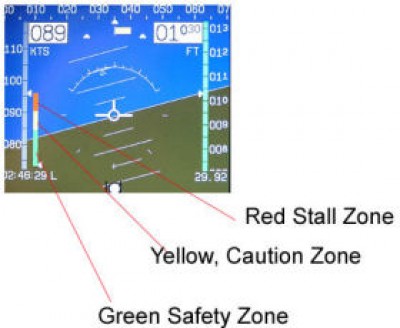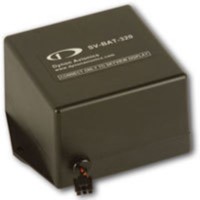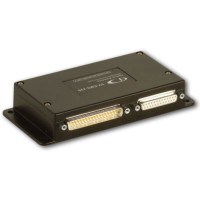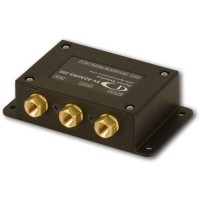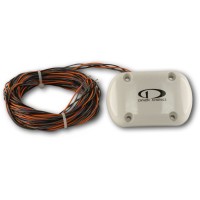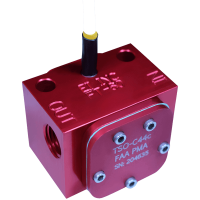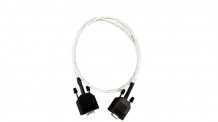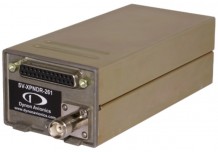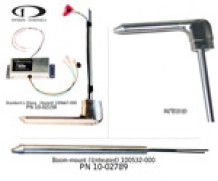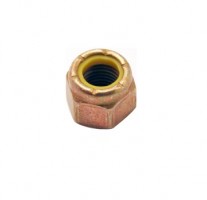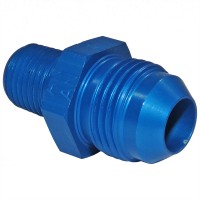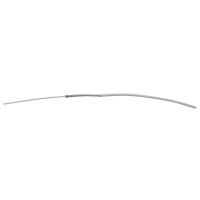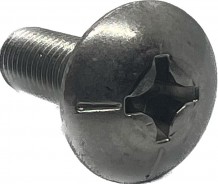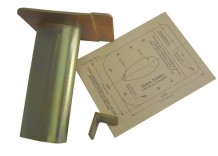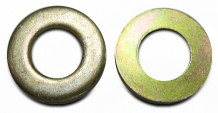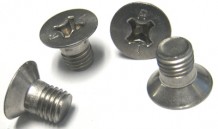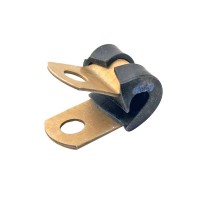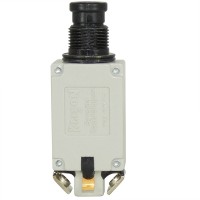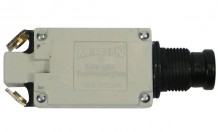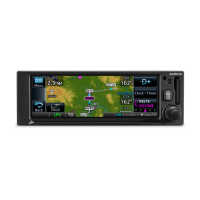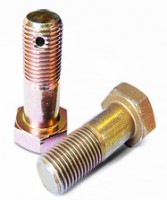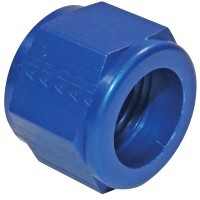Aircraft Spruce Canada
Brantford, ON Canada
Corona, CA | Peachtree City, GA
Chicago, IL | Wasilla, AK
Dynon AOA Pitot Heated Large Tube No Bracket
MFR Model# 100667-000
| Description | Part No. |
|---|---|
| DYNON AOA/PITOT HEATED L TUBE | 10-02158 |
Overview
|
The Dynon Avionics AOA/Pitot probe performs two functions: airspeed sensing and angle of attack sensing. These functions require having two pressure ports on the tip of the probe. The normal pitot pressure port is on the front face of the probe and is designed to be insensitive to angle of attack. The second pressure port is located on an angled surface just under the pitot port and is designed to be very sensitive to AOA. The pressure from each port is delivered via separate air lines to the instrument where they are compared to previously calibrated scenarios specific to that aircraft. br> Heated AOA Pitot: The heated pitot includes a nichrome heating element that is regulated by a separate pitot heater controller unit supplied with the pitot. The controller actively monitors a temperature sensor embedded within the pitot head and regulates the power to maintain a constant temperature. This not only conserves energy but additionally prolongs the life of the heater. The controller also outputs a signal that can be wired to a warning light in the cockpit to warn the pilot anytime there is a malfunction or that the pitot is turned off. Most pilots are introduced to the concept of angle of attack during their initial flight training. However, as most GA aircraft do not provide a way to directly measure this critical flight parameter, angle of attack usually becomes an academic notion which is not thought about while flying. Dynon Avionics was the first EFIS manufacturer to realize the importance of angle of attack and offer an affordable, accurate, and useful way to monitor it. What is Angle of Attack, why is it important, and who uses it? Angle of attack is quite simply the angle between the wing chord and the oncoming air that the wing is flying through. This is an important concept, as aircraft wings stall when angle of attack gets too large, at a value known as the “critical” angle of attack. As pilots are taught in flight training, an aircraft can stall at ANY speed if this critical angle of attack is exceeded. Hence, a great way to avoid stalls is to not let the angle of attack reach critical, and the best way to avoid critical angle of attack is to know what your angle of attack is in the first place. Dynon Avionics' AOA/Pitot Probe Dynon Avionics was the first manufacturer of affordable EFIS products to offer a way to measure angle of attack. Through extensive wind tunnel testing, Dynon is able to offer an angle of attack (AOA) pitot probe that measures both angle of attack and airspeed when connected to any of our EFIS-based products. Critical Angle of Attack> Principle of Operation The pressure from each port is delivered via separate air lines to the instrument where they are compared to previously calibrated scenarios specific to that aircraft. Easy Installation and CalibrationUnlike other angle of attack instruments available to homebuilders, the Dynon AOA/Pitot probe does not require you to drill special ports in wing skins. It also does not have any moving parts such as vanes. It is simply an AN5812-style pitot tube with an additional pressure port to measure AOA. Simply use it as a normal pitot tube. The only difference is a second plumbing line which runs back to the instrument for AOA calculation. Once installed, the AOA/Pitot is calibrated to the individual aircraft by running it through a series of pitch oscillations and stalls in various flight configurations. All calibration procedures are performed via button pushes on the instrument face. PresentationAngle of attack is indicated on the EFIS display as a vertical color-coded tape with green, yellow and red areas. Once calibrated, critical angle of attack will be indicated with the pointer positioned in the red area of the tape. An audio alarm can also be generated as AOA becomes critical. It can be set as either a steady tone that sounds very near the critical AOA, or alternatively as a beeping tone that starts as AOA gets high and increases in frequency until it is a solid tone very near the critical AOA. Heated AOA Pitot Note: Mounting hardware for pitot tube needed for installation PN 10-01820. |
Documents
Reviews
High quality, nice finish.
It is incredible that a $450 pitot tube is not drilled and tapped for the 4 universal mounting holes! This is a DIY pitot tube. Machining is required to make it fit a standard pitot mast. The Garmin GAP 26 is less expensive and you do not need to do any machining.
Q&A
Please note, Aircraft Spruce Canada's personnel are not certified aircraft mechanics and can only provide general support and ideas, which should not be relied upon or implemented in lieu of consulting an A&P or other qualified technician. Aircraft Spruce Canada assumes no responsibility or liability for any issue or problem which may arise from any repair, modification or other work done from this knowledge base. Any product eligibility information provided here is based on general application guides and we recommend always referring to your specific aircraft parts manual, the parts manufacturer or consulting with a qualified mechanic.
On our Dynon Heated AOA page you can click on the document tab and look at page 3-1 of the manual giving all the materials required for this install.
Per MGL the Dynon AOA Pitot Tube/Boom works great with the MGL Challenger.
No, the mount for part number 10-02158 must be ordered separately. The mount that is compatible with this unit is part number 10-01820.
No the pitots listed on this page do not, but we sell part # 12-03283 which is a Dynon kit.
Yes the mount is the same, you will need to mount the remote heat box and add electrical leads.
Per the installation manual states the following: The sensed version of the angle-of-attack option uses a two-port pitot tube, such as the Garmin GAP-26.
Grand Rapids does not specify any pitot tube. This may work but we cannot say for sure. The manual has a Garmin pitot recommendation.
No, we sell this for use in experimental aircraft only.
Yes, it will.

 Aircraft Spruce Canada
Aircraft Spruce Canada



